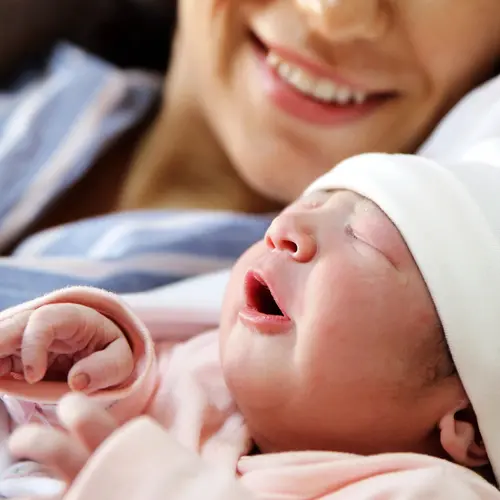Preeclampsia is a condition that causes high blood pressure during pregnancy or in the days and weeks after you give birth. It can also lead to organ damage that most often affects the liver and kidneys. Preeclampsia happens after week 20 of a pregnancy.
The good news is that most people deliver healthy babies and get better. Here’s what you need to know.
Symptoms
Your blood pressure might rise slowly or go up suddenly without warning. You may not have any symptoms at all. That’s why it’s important to get your blood pressure checked often.
Preeclampsia usually happens in the second trimester. Symptoms can include:
- Too much protein in your pee (proteinuria)
- A headache that won’t go away with pain relievers
- Pain in your upper belly or right side
- Problems breathing
- Swelling in your face and hands (also happens with a normal pregnancy)
- Feeling sick to your stomach or throwing up (also happens with a normal pregnancy)
- Anxiety
- Vision problems (blurred vision, seeing spots, sensitive to light)
Call your doctor if you have any of these symptoms. Go to the emergency room right away if you have:
- A hard time breathing
- A headache that won’t go away
- Pain in your upper belly or right side
- Vision problems
Early-Onset Preeclampsia
That’s when your blood pressure spikes at or before 34 weeks. The earlier it happens, the higher the risk of complications for you and your baby. You might have to deliver your baby early.
Research shows babies born to mothers with early-onset preeclampsia are often smaller than expected. That’s a condition called fetal growth restriction, or FGR. They’re also more likely to have problems with their:
- Nervous system
- Heart and lungs
- Breathing
- Blood and red blood cells
Your baby might also have a lower Apgar score. It’s a test given right after birth that measures:
- Skin color
- Heart rate
- Reflexes
- Muscle tone
- Breathing
A low score doesn’t always mean your baby is in trouble. They may just need extra medical care their first few minutes in the world. Perfectly healthy babies sometimes have a low score at first.
Compared to women who get preeclampsia later in their pregnancy, women with early-onset preeclampsia tend to have:
Higher protein levels. They’re sometimes nearly twice as high. Too much protein in your pee is a sign of kidney damage.
More serious preeclampsia. Your overall blood pressure could be higher and is less likely to get better with treatment.
One study found you may be more likely to get genital and urinary infections, and have issues with your blood. You might also have problems breathing, and your placenta could separate from your uterus too early.
Postpartum Preeclampsia
Sometimes, high blood pressure symptoms may not start until after you’ve delivered your baby. It’s most common in the first week after delivery, but you’re still at risk up to 6 weeks later.
The signs of postpartum preeclampsia are mostly the same as those during pregnancy. But they don’t affect your baby. Women with high blood pressure after birth are at risk of:
Stroke. A stroke disrupts the blood supply to part of your brain, robbing it of oxygen.
Extra fluid in the lungs. Pulmonary edema causes fluid to build up in your lungs’ air sacs and makes it hard to breathe.
Blocked blood vessels. Known as thromboembolism, this is when a blood clot travels from another part of your body and blocks a blood vessel.
Prevention
Doctors aren’t quite sure how to stop preeclampsia from happening. More research is needed. Being as healthy as possible before you get pregnant helps. That means eating healthy, exercising, and quitting smoking. Your doctor may suggest these if you have certain risk factors:
Aspirin. After 12 weeks of pregnancy, your doctor may recommend taking a low dose of aspirin (81 milligrams) every day if you’ve had:
- Preeclampsia during another pregnancy or a family history of preeclampsia
- A multiple pregnancy (carried several babies at once)
- Ongoing high blood pressure
- Kidney disease
- Diabetes
- An autoimmune disease
Calcium supplements. They may ward off preeclampsia in women who don’t get enough calcium before or during pregnancy.


